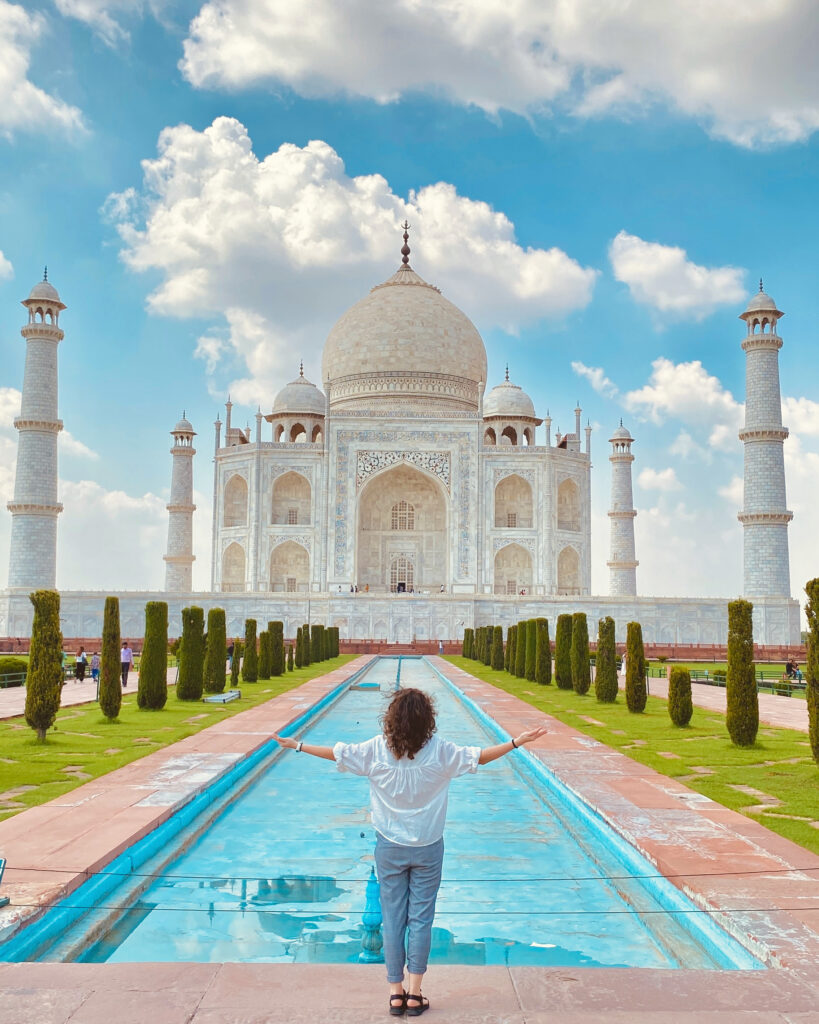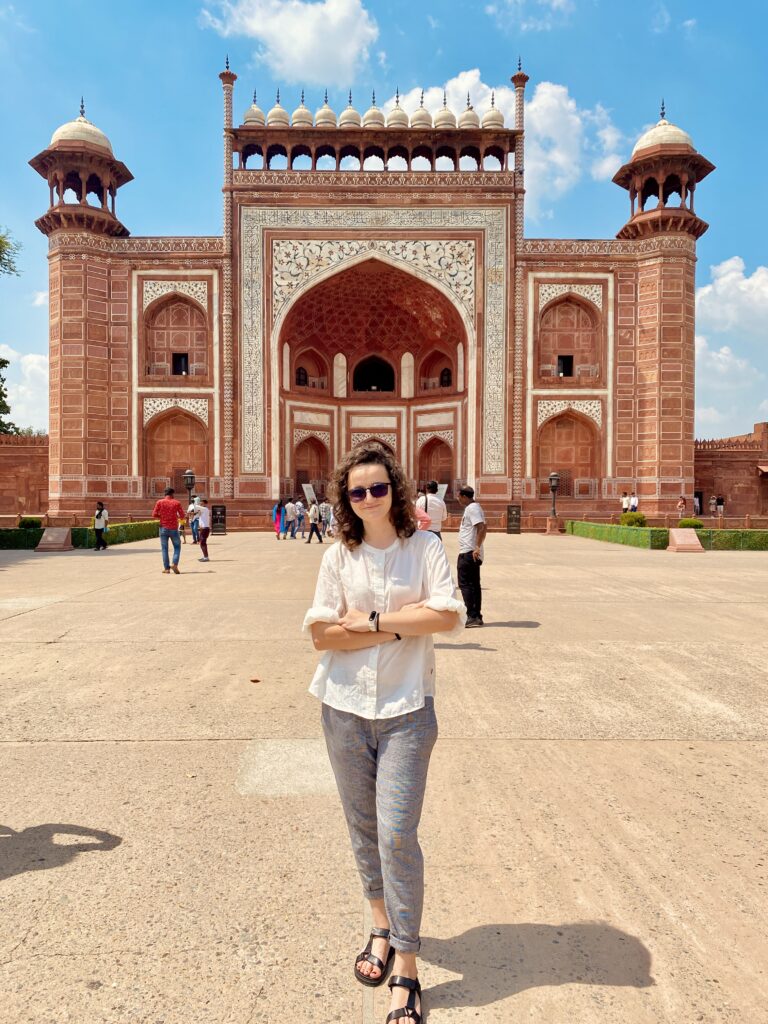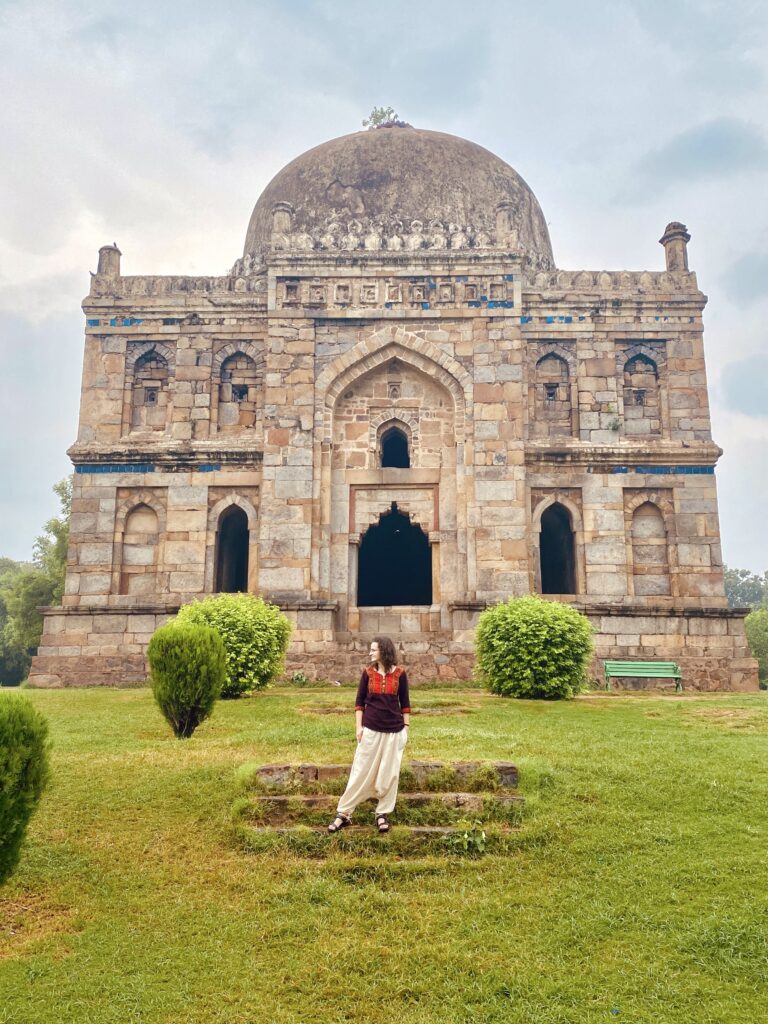The Taj Mahal.. We all know it as the “symbol of love”, the breathtaking white marble mausoleum that somehow manages to look even more stunning in person than it does in any picture you’ve seen. But behind its dazzling beauty lies a deep, emotional history—a love story for the ages. So, grab your favorite cozy drink, and let me take you back in time.
The Beginning: A Love Like No Other
The story of the Taj Mahal begins in the 17th century with Shah Jahan, the fifth Mughal emperor of India. Now, Shah Jahan wasn’t always the powerful ruler we think of today. Before all the fame, his heart belonged to one woman: Mumtaz Mahal. Mumtaz wasn’t just his wife; she was his soulmate, the love of his life, and, according to some accounts, his emotional anchor during the chaos of royal duties.
Together, they had 14 children (yes, 14—someone give these two an award for parenting stamina). But in 1631, tragedy struck. Mumtaz Mahal passed away after giving birth to their 14th child. Shah Jahan was devastated. So much so, that it’s said he fell into deep mourning, refusing to eat or take part in royal affairs for months after her death. His grief was so overwhelming that it consumed him. And out of this sorrow, the Taj Mahal was born.

The Vision: A Monument of Eternal Love
Shah Jahan decided that he would honor Mumtaz Mahal with a monument so grand, so beautiful, that it would stand the test of time. A structure that would symbolize his eternal love for her—a love that even death couldn’t take away.
In 1632, construction began on what would become one of the most iconic buildings in the world. The site was carefully chosen on the banks of the Yamuna River, offering a stunning view of the setting sun. Shah Jahan wanted the Taj Mahal to be a “heavenly” building, and that’s exactly what it is—an architectural masterpiece that combines Persian, Ottoman Turkish, and Indian styles.
Over 20,000 workers, artisans, and craftsmen were brought together from all over the empire to work on the Taj Mahal. They used white marble, which was imported from Rajasthan, and adorned it with intricate inlay work, made from precious stones like turquoise, lapis lazuli, and jade. It took over 17 years to complete the structure, with the main tomb finished in 1653. And yes, all that hard work is evident when you see the Taj Mahal in person.
But, what really adds to the mystique of the Taj Mahal is that it’s not just a building; it’s a symbol of eternal love—a love that was so profound that Shah Jahan wanted the world to witness it

A Love That Defied Death
Here’s the twist. As beautiful as the Taj Mahal is, it’s also a bittersweet story. Shah Jahan, the man who had poured everything into the Taj as a tribute to his beloved Mumtaz, was not allowed to live the rest of his life in peace. After the completion of the Taj Mahal, Shah Jahan’s son, Aurangzeb, staged a coup against him. In 1658, Shah Jahan was imprisoned in the Agra Fort, where he spent his final years. The irony? He spent the rest of his life staring at the very monument he had built for his wife—an agonizing reminder of his love and his loss.
Shah Jahan’s son, Aurangzeb, didn’t exactly appreciate his father’s extravagant display of grief (or perhaps, he just wanted to take the throne), so he locked Shah Jahan away in a room in the Agra Fort, which had a direct view of the Taj Mahal. For the rest of his life, Shah Jahan gazed at the Taj Mahal, the one place where he was truly together with his beloved Mumtaz.
In a final act of poetic justice, Shah Jahan’s own tomb was placed beside Mumtaz’s in the Taj Mahal complex. His tomb is simpler and smaller, as it was meant to be a humble final resting place next to the woman he loved so dearly.
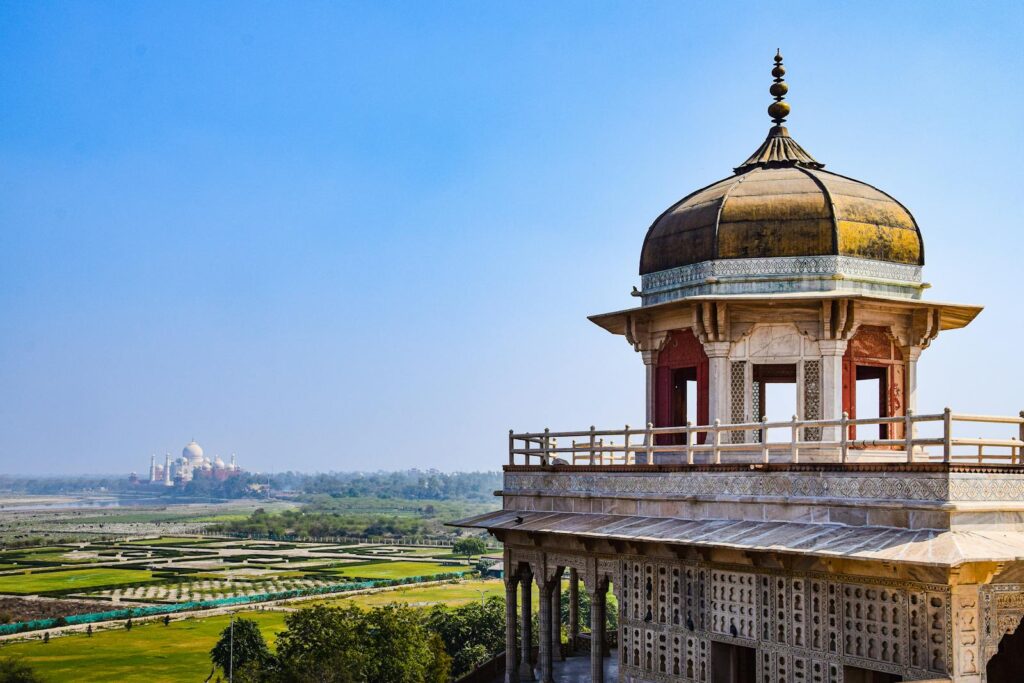
What Makes the Taj Mahal So Magical?
Alright, let’s get down to the real reason why people from all over the world line up to visit the Taj Mahal—the beauty. Yes, it’s gorgeous, but it’s also like the best kind of beauty—a beauty with a soul.
First of all, the Taj Mahal is made of white marble that changes color depending on the time of day. Morning? It’s soft pink, like the first blush of love. Afternoon? It’s dazzling white, like it’s glowing from within. And at night, it turns golden, as if the building itself is basking in the warmth of the memories it holds. You might find yourself staring at it for hours, thinking, “I am now in love with a building, and that’s okay.”
Next, let’s talk about the gardens. The Taj Mahal is surrounded by a beautiful garden designed to represent paradise, with symmetrical paths, pools, and fountains that reflect the structure itself. Symmetry is the secret ingredient. The garden’s tranquility almost feels like you’ve stepped into a peaceful alternate reality. But that peace doesn’t come without a price—because if you’re going to take that perfect picture, you’ll have to brave the crowds (pro tip: go at sunrise to avoid them).
Finally, the craftsmanship. The Pietra Dura technique used to create the intricate inlay work on the marble is mind-blowing. These artisans embedded precious stones like lapis lazuli and agate to create stunning, intricate patterns. It’s as if nature’s jewels were gently placed onto the surface to enhance the love story being told. If you didn’t already feel romantic walking in, the stones will definitely do the trick.
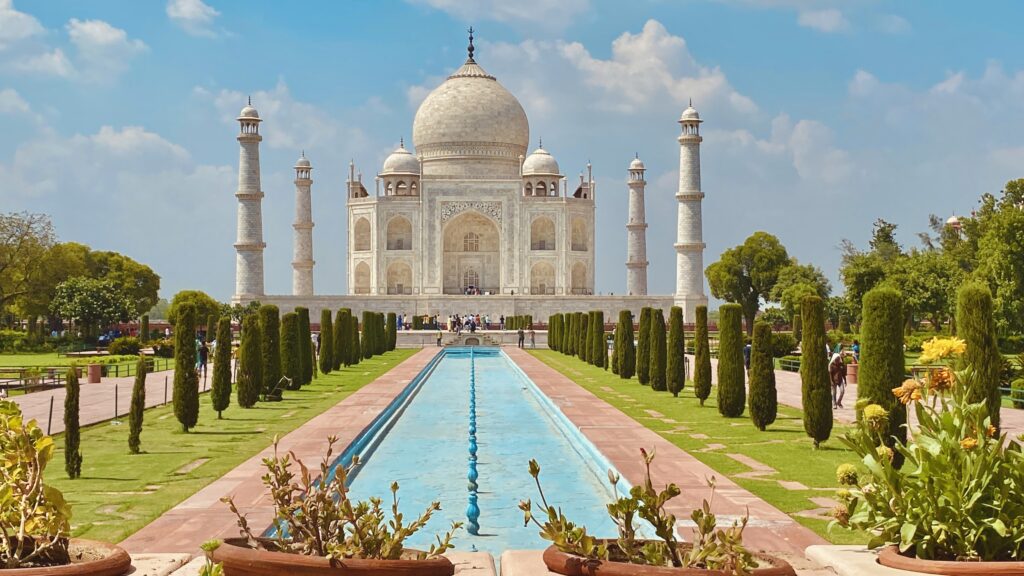
The Taj Mahal Today: A Living Legacy
Now, as much as the Taj Mahal stands as a tribute to love and loss, it also serves as a reminder of India’s rich cultural history. It’s an architectural marvel that mixes Indian, Persian, Ottoman, and Mughal influences, blending them into a masterpiece that transcends time and geography. The Taj Mahal has become a symbol of India itself—an enduring testament to the country’s artistic, cultural, and architectural heritage.
Despite the crowds and the heat, standing in front of the Taj Mahal still feels like stepping into a dream. It’s a place that speaks to the human heart, reminding us that love, in its truest form, is eternal—and can never be fully captured by time, death, or anything else.
So, if you’re ever in Agra, know that the Taj Mahal isn’t just a photo op or a tourist attraction. It’s a monument of love that stands the test of time—literally and figuratively. Whether you’re admiring its beauty, listening to your guide share its fascinating history, or just taking a moment to reflect, the Taj Mahal offers more than just a stunning view. It offers a glimpse into the very heart of human emotion, and in that way, it’s unlike any other building on Earth.

